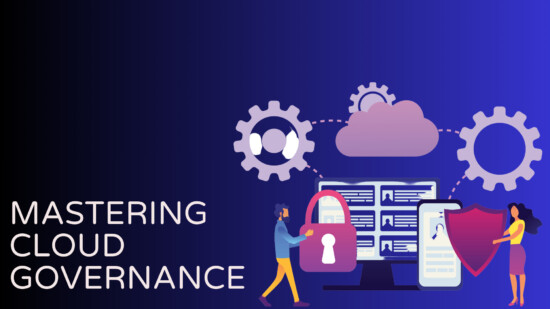As businesses move toward more on-demand services, many are taking advantage of the scalability benefits of cloud computing. Although workload flexibility is important, your top priority should be creating a purpose-fit, business-aligned cloud approach. This is especially true when it comes to selecting the right cloud delivery model.
Central to developing an intelligent cloud strategy is understanding your core business needs and what you want to accomplish by moving to the cloud. This requires identifying the specific level of performance and functionality your workloads require; your data security and compliance requirements; and the existing infrastructure you have in place and how you plan to manage it.
While cloud deployment options vary widely, there are three main types of cloud service delivery options.
- Software as a Service (SaaS) offerings are services at the application level
- Infrastructure as a Service (IaaS) offerings are at the hardware infrastructure level
- Platform as a Service (PaaS) offerings are at the middleware level
Each model has its own set of advantages and disadvantages. By gaining deeper insight into the pros and cons of each model and the ideal use cases, you can determine which configuration will best meet your application demands.
- Saas ― As one of the most widely used cloud service models, SaaS uses the cloud to deliver software to users, which is then accessed through a Web browser. Unlike on-premise software, SaaS does not require you to install or download anything into your computing infrastructure. A key advantage of SaaS is the ability to scale your level of services as your business grows. It is also highly affordable since it eliminates the expenses involved in the purchase, installation, maintenance, and upgrades of computing hardware.
Most SaaS vendors allow you to add new features with just a few clicks, enabling efficient software updates and continuous improvement to the user interface. SaaS delivery models range from subscription-based software to full business process outsourcing. Like with any technology deployment, security is critical. Therefore extensive, up-front due diligence is recommended when evaluating any SaaS provider.
Pros:
- Cost-efficient. SaaS solutions are hosted on the provider’s servers, which means the provider is responsible for software maintenance and updates. SaaS is an attractive option for small businesses that might not have the necessary budget and resources to deploy on-premise hardware.
- Easy access. Unlike on-premise software, SaaS has few access limitations. With service available through the Internet, you can easily access software from anywhere you have connectivity.
- Fast start-up. You can launch SaaS services and take advantage of software functional quickly. In most cases, you can simply register for the service and gain fast access to the software application and resources.
Cons:
- Lack of control. The inherent nature of a SaaS-based application leaves users with minimal or no control over service delivery functions and reliability. The vendor controls and owns the SaaS software and hardware.
- Connectivity issues. While the vendor may give you an up-time guarantee, poor network connectivity and slow speed can also affect the performance of your SaaS application.
- SaaS requires you to share sensitive business information with an outside vendor, creating a few security concerns. You can, however, use specific access management tools to make your application more secure.
- IaaS ― IaaS provides on-demand access to ready-to-use computing infrastructures such as storage, servers, and networking resources. For businesses looking to virtualize their system via the cloud, IaaS offers a logical starting place, since it allows you to move existing support systems to the cloud with other solutions migrated or introduced as needed.
Businesses are increasingly turning to IaaS for specific, highly variable or fast-growing computing needs. Infrastructure can be scaled or reconfigured on-demand to meet shifting business needs. Since you only pay for what you use, this model frees you from the cost and responsibility of managing the infrastructure and operating environment.
Pros:
- Affordable. IaaS provides a cost-effective way to scale rapidly and accommodate growth without significantly increasing overall IT costs. Businesses benefit from affordable access to enterprise-class solutions, while the pay-as-you-go IaaS model allows you to pay only for what you use.
- Quick deployment. IaaS allows you to quickly deploy servers, processing, and storage resources and get them online and operational rapidly without having to invest in each one individually.
- Scalability – IaaS is suited for fast-growing small and mid-sized businesses as it is considerably scalable. The ability to quickly add new products or features to your IaaS can help accelerate your time to market.
Cons:
- The IaaS-based model may have data security concerns due to its multitenant architecture. The security risk can be minimized in some cases if the vendor adheres to specific industry standards.
- Upgrades and maintenance. You are typically responsible for maintaining and updating the hardware, software, and databases you‘ve developed. The vendor will maintain and upgrade only its designated infrastructure.
- You control the infrastructure and applications you have developed. However, you do not have control over the vendor-owned infrastructure or data center.
- PaaS ― With PaaS, the vendor provides you with the cloud infrastructure you need to build, test, and deploy business applications. You get access to the combined cloud infrastructure without the underlying complexity of managing it. Developers can concentrate on creating new applications without stressing about time-intensive infrastructure tasks like configuring storage, servers or backup.
PaaS typically comes with operating servers, database servers, and programming languages for developing cloud-based applications from scratch. Accessed through a web browser, the subscription-based model gives you flexible pricing options based on your business requirements. With its ability to ease IT management burdens and reduce costs, the scale-on-demand capabilities of PaaS can help remove the barriers to innovation and growth.
Although PaaS originated as a platform, it has since expanded to represent a range of different technology types. This means specific offerings target distinct roles and users. As companies continue to move to the PaaS option for strategic and challenging innovation projects, the industry continues to mature and evolve.
Pros:
- Streamline development. PaaS can help accelerate application development since all computing resources are provided by the vendor, minimizing distractions and streamlining processes for the development team.
- Programming support. PaaS generally supports multiple programming languages, helping businesses ease application development for a wide range of projects.
- Automated updates. With most PaaS vendors providing automated updates, users don’t have to worry about updating infrastructure with the latest security patches.
Cons:
- Single vendor – Platform architecture, programming language, and resource configuration is unique to each vendor. As such, moving from one vendor to can be cumbersome. Switching vendors will require you to essentially rebuild the entire application from scratch.
- Escalating Costs – In most, the cost of running a PaaS application is directly proportional to its size, which means running large applications can result in increasingly higher costs.
- Security – PaaS vendors typical use a public or multi-tenant environment for database and application storage and other resources. Therefore, running PaaS apps containing confidential information or under strict compliance mandates not be the best approach.
Maintaining a value-centered focus
While the cloud has the potential to deliver substantial business benefits, that doesn’t mean it is necessarily the best option for every workload. While agility and efficiency are important, moving to the cloud is more about deciding what is best for the business.
As with any IT investment, certain risks come with the territory. Minimizing those risks and capitalizing on the full potential of cloud requires a strategic, pragmatic approach, evaluating essential infrastructure requirements, risk factors, performance needs, and cost considerations.
When evaluating potential workloads and their viability for cloud adoption, initial questions revolve around business value. What is the real cost-benefit of moving those workloads to the cloud? From there, you will need to evaluate the technical characteristics of the application. Is it technically feasible to move the workload to the cloud? How will that migration impact the overall IT environment? What is the potential risk exposure?
While the cloud can offer a wide variety of business benefits, choosing the right delivery model can be tricky. For best results, work with an experienced IT consultant who can help tailor a solution that best accomplishes your business and technical objectives and optimizes your return on investment








